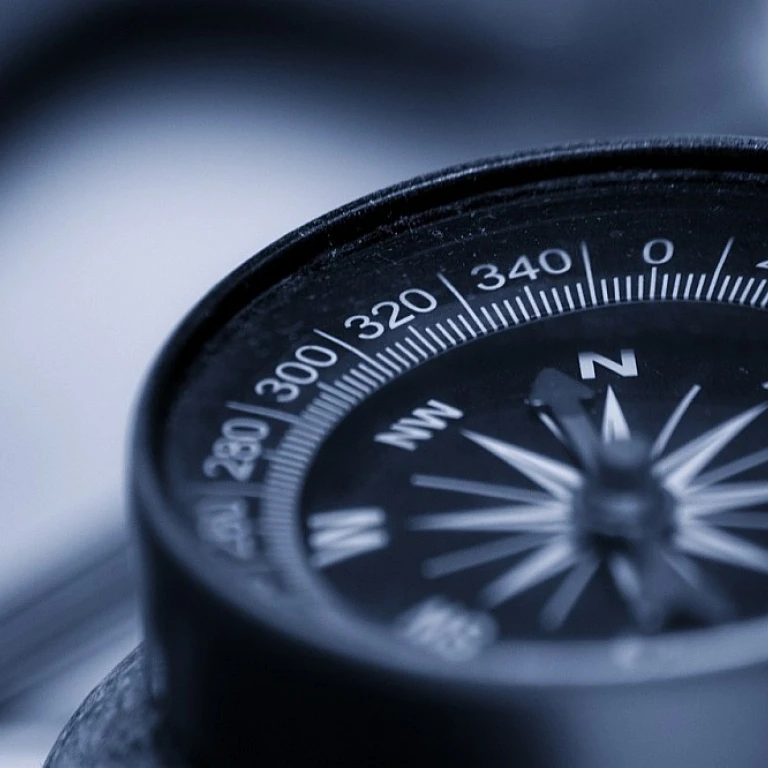Understanding Remote Team Dynamics
Decoding the Dynamics of Remote Teams
Navigating the ever-evolving dimension of remote team dynamics requires an adept understanding of how individuals and teams operate within the virtual realm. The remote work environment, while offering flexibility and a global talent pool, can present challenges that require strategic coaching to enhance team performance and cohesion. Recognizing the core elements that drive team dynamics is vital for coaches aiming to help individuals and teams achieve their goals. In the context of remote teams, understanding individual strengths is crucial. Each team member brings unique skills and perspectives to the table, and leveraging these individual strengths can drive team success. As a coach, you must identify these strengths and help the team align them with specific team goals. This process fosters a collaborative environment where each member feels valued and empowered to contribute to the team's objectives. Effective leadership development plays a critical role in shaping remote team dynamics. A good coach nurtures leadership qualities within team members, enabling them to take initiative and lead projects with confidence. Encouraging leadership growth not only improves individual team member performance but also strengthens the collective capability of the team. Constructive feedback, when used strategically, aids in refining individual and team performance. Regular check-ins provide an opportunity for open communication and performance coaching, where valuable insights can be shared. Understanding how to deliver feedback effectively boosts motivation and helps team members align their personal development with the broader team goals. The complexities of remote team dynamics can be managed through a model focused on goal alignment, accountability, and collaboration. Coaches and team leaders should prioritize creating an environment conducive to learning and development. The ultimate aim is to build high performing teams that thrive on collaboration and trust. For more insights into how remote working roles can be managed for success, consider exploring the nuances of navigating the world of remote customer success jobs. This detailed guidance can serve as a model for developing individualized strategies that align with your team's specific needs and objectives. Understanding and mastering the dynamics of remote teams can greatly improve team performance outcomes. Remember, a well-structured strategy focusing on individual and team growth can transform challenges into opportunities for success.Effective Communication Strategies
Communicating with Clarity and Purpose
Effective communication is the cornerstone of any successful remote team. For coaches looking to enhance the performance of their remote teams, focusing on communication strategies is crucial. Clear and purposeful communication fosters understanding, streamlines processes, and aligns team members with the broader goals of the organization.
As a coach, it's essential to establish regular channels of communication that promote transparency and accessibility. Encourage team members to provide feedback openly, ensuring that everyone feels heard and valued. This can help in identifying individual and team strengths, which can be leveraged to meet team goals.
Adaptive Communication Tools and Techniques
Leveraging various communication tools can help bridge the physical gap between team members. Platforms that support both formal and informal interactions can improve team dynamics significantly. It is also beneficial to adapt communication styles to fit the diverse needs of your team, recognizing that individual team members may have different preferences and strengths.
To help team members align with the team's objectives and improve performance, incorporate upward management techniques. This involves promoting a culture where feedback flows not only from the top down but also from the bottom up, encouraging a free exchange of ideas and concerns.
Effective Check-Ins and Constructive Feedback
Regular check-ins are vital for maintaining engagement and motivation. They offer opportunities for performance coaching and development discussions, allowing both coaches and team members to track progress and address any challenges collaboratively. These sessions should focus on constructive feedback and align individual strengths with team goals to foster a high-performing environment.
Remember, the goal is to not only maintain but also to improve communication over time, facilitating a collaborative and innovative work atmosphere. By doing so, coaches can significantly enhance the overall performance and cohesion of their remote teams.
Building Trust and Accountability
{Building Strong Foundations for Accountability and Trust
Developing trust and accountability within a remote team requires a proactive approach. As a coach or leader, establishing a culture where team members feel respected and valued is the bedrock for a high-performing team. An essential aspect here is recognizing individual strengths. Understanding what each team member brings to the table can help assign roles that align with their best abilities, fostering both personal and team development. Having clear team goals is vital. It sets a shared vision, providing direction and benchmarks that guide collective effort. With goal alignment, each team member understands their contribution to the overall objectives, transforming individual efforts into cohesive outcomes. It's also important that performance and progress are regularly tracked and communicated. Regular check-ins and constructive feedback are key elements in maintaining accountability. Performance coaching plays a pivotal role in this process. By focusing on performance improvement, you will encourage self-development and enable people to recognize how they fit into the wider team dynamics. Moreover, feedback should not only focus on areas for improvement but also celebrate achievements, reinforcing positive behavior and boosting morale. To further enhance collaboration with the team, encourage open communication and the exchange of ideas. This not only supports innovative solutions but also nurtures a collaborative spirit, which is crucial for high performing teams. Effective team coaching thus requires a mix of leadership development, empathy, and strategic thinking, with the aim of cultivating a trusted environment where people feel empowered to express their creativity while being accountable for their contributions.}Encouraging Collaboration and Innovation
Fostering Creative Collaboration and Innovation
To drive success within a remote setting, it's essential for coaches to focus on fostering an environment where collaboration and innovation thrive. Understanding team dynamics in such setups aids in forming strategies that leverage individual strengths for the benefit of the collective. Establishing a culture that encourages team members to engage openly with one another can hinge on key practices:- Create Open Forums for Communication: Regular check-ins and team meetings can help break down barriers, paving the way for a free exchange of ideas. Coaches can lead these interactions by modeling constructive feedback and encouraging every member to share their insights.
- Leverage Technology for Better Connections: Making use of collaborative tools ensures that team members, regardless of locations, are just a click away. Such tools enable members to work synchronously or asynchronously on shared projects, allowing creativity to unfold at its best.
- Encourage Team Building Activities: Virtual or physical team building exercises are essential in strengthening relationships and breaking monotony. They provide a platform for leadership development and help integrate different perspectives that can propel innovation.
- Align Goals with Innovation: Aligning team goals with each member's development aspirations can motivate individuals to think outside the box. By linking performance coaching to broader goal alignment, coaches can enable teams to achieve high performing outcomes.
- Nurture a Safe Space for Experimentation: Innovation often blossoms in environments where individuals feel safe to take risks. Encouraging the notion that failure is part of the learning experience can help both strengthen resilience and inspire fresh ideas.
Performance Monitoring and Feedback
Maintaining High Standards: Monitoring and Feedback
In the pursuit of continuous improvement, performance monitoring and the delivery of constructive feedback are critical components in remote work environments. High-performing teams thrive on clarity and alignment with team goals, which is why regular performance coaching discussions are essential.
The objective is not merely to check off tasks but to help team members harness their individual strengths. By understanding unique strengths, a coach can tailor guidance, fostering leadership development and enhancing overall team performance. Here’s how:
- Regular Check-Ins: Consistent communication and scheduled check-ins help monitor progress and address any challenges promptly. It also reinforces accountability, enabling both the coach and individual team member to stay aligned with their goals.
- Constructive Feedback: Delivering feedback should be approached with empathy and focus on growth. A good coach emphasizes what individuals are doing well, alongside areas for improvement, thereby scaffolding a pathway for development.
- Goal Alignment: Promoting a shared understanding of team goals ensures everyone is moving in the same direction. Collaborative goal setting not only enhances accountability but also aligns with the diverse dynamics of remote teams.
- Utilizing Performance Metrics: Data-driven insights can provide objective measures of individual and team performance. These metrics enable coaches to offer specific, actionable feedback and recognize successes.
By weaving these elements into their approach, coaches will effectively bolster team dynamics. This proactive stance aids in establishing a culture of trust and transparency, laying a robust foundation for remote team success. Transforming feedback into a tool for motivation, rather than criticism, ensures a supportive environment that encourages learning and development for all team members.
Promoting Work-Life Balance
Balancing Work and Personal Life for Optimal Performance
Creating a healthy balance between work and personal life is crucial for improving team performance, especially in a remote setting where the lines can easily blur. Successful team coaching involves guiding team members to set boundaries and helping them align their work and personal goals.- Encourage Regular Check-ins: Regular check-ins are instrumental for maintaining open communication between coaches and team members. These interactions enable coaches to provide ongoing feedback on performance, team dynamics, and goal alignment. It's important for coaches to be attentive to individual strengths and help team members identify areas for development. Moreover, check-ins provide a platform for discussing personal goals and ensuring they are respected alongside team goals.
- Promote Flexibility: One of the best strategies for leadership development and encouraging a healthy work-life balance is to promote flexible work schedules. This approach not only helps teams meet individual needs but also boosts overall satisfaction, leading to a high performing team. Providing team members with the autonomy to manage their own time can improve team performance as individuals feel more in control and valued.
- Provide Constructive Feedback: Effective performance coaching involves giving constructive feedback that acknowledges individual efforts and individual strengths. Constructive feedback not only helps individuals improve but also models a culture of growth and improvement within teams. Coaches should aim to celebrate successes and encourage learning from challenges in a manner that supports both professional and personal development.
- Encouraging Breaks and Downtime: Encouraging regular breaks and downtime is an important part of managing stress and boosting overall team performance. Coaches can model this behavior by planning breaks during meetings or advocating for downtime during busier periods. Recognizing the need for personal time and supporting it within team dynamics will help improve team morale and commitment.








